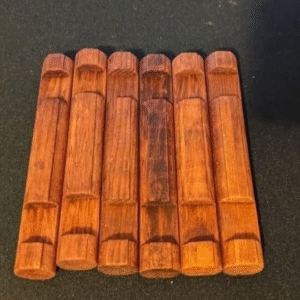When embarking on a woodworking or construction project, the materials you choose can make or break the final outcome. 4×4 lumber, commonly used in framing, outdoor structures, and various DIY projects, is a critical element that requires careful selection. Not all 4x4s are created equal, and understanding the nuances of wood quality can save you time, money, and frustration in the long run.
The Risks of Choosing the First Available Lumber
Grabbing the first piece of 4×4 lumber you see at the store might seem convenient, but this could lead to significant issues as your project progresses. Poor-quality lumber can lead to structural failures, aesthetic problems, and additional costs for repairs. The risks are especially high when working on load-bearing structures where inferior wood could compromise safety.
What to Look for in High-Quality 4×4 Lumber
High-quality 4×4 lumber should have a straight grain, minimal defects, and a consistent color. The surface should be smooth without signs of sap, stains, or milling errors. Additionally, check for uniform sizing and proper kiln drying to ensure that the wood will hold its shape over time. It’s important to inspect each piece for these attributes, rather than assuming all 4x4s in a batch are the same.
The Impact of Lumber Grade on Your Projects
Lumber is graded based on its quality, with higher grades indicating fewer knots, splits, and imperfections. The grade you choose should match the specific needs of your project; for example, structural projects typically require higher-grade lumber to ensure safety and longevity. Understanding lumber grades and how they relate to performance and appearance is essential for making the right choice.
Avoiding Warped and Twisted Lumber
Warping and twisting are common issues that significantly reduce the usability of lumber. These defects occur when wood is exposed to uneven or improper drying conditions, leading to internal stresses being released. A careful inspection can help you avoid such pieces: look lengthwise down the wood to check for straightness and use a level or square to test for warping.
Recognizing Defects: Knots, Splits, and More
Knots, splits, and other defects are not just aesthetic issues, they can also affect the structural integrity of your project. While some projects might allow for a few tight knots, others demand clear wood. Splits and cracks, particularly those that run through the entire piece, weaken the wood and can lead to failure under stress. Learning to recognize and evaluate these defects is an important skill.
Moisture Content: A Key Factor in Lumber Durability
Moisture content in lumber is crucial for its durability and workability. Wood that is too wet can warp and shrink as it dries, while overly dry wood is prone to cracking and splitting. Ideally, the lumber you choose should have a moisture content that matches the environment where it will be used to ensure stability and longevity.
The Consequences of Poor Lumber Selection
Selecting poor-quality lumber can result in a slew of problems, from increased project costs and wasted time to subpar structural performance and aesthetic disappointment. These issues can compound over time, leading to potential safety hazards and necessitating costly repairs or replacements.
Tips for Inspecting Lumber Before Purchase
Always take the time to thoroughly inspect each piece of lumber before purchasing. Use your eyes and hands to detect defects, feel for weight (which can indicate moisture content), and lay pieces out to compare straightness. Don’t hesitate to ask store personnel about the wood’s source and drying process. Bringing a moisture meter can also provide insights into the wood’s readiness for your project.
The Long-Term Benefits of Investing Time in Lumber Selection
Investing time in selecting quality lumber pays dividends in the long run. Your projects will look better, perform more reliably, and last longer. Quality selection reduces the likelihood of needing repairs and replacements, offering peace of mind and satisfaction with your work. This careful approach also ensures that the investment you make in materials is well spent.
Conclusion: Making Informed Decisions for Successful Projects
Choosing the right 4×4 lumber is a vital step in ensuring the success of your woodworking or construction projects. By understanding what to look for and why it matters, you can make informed decisions that enhance the durability, safety, and beauty of your creations. Don’t leave your project’s success to chance—take the time to select quality materials and enjoy the long-term benefits they provide.




